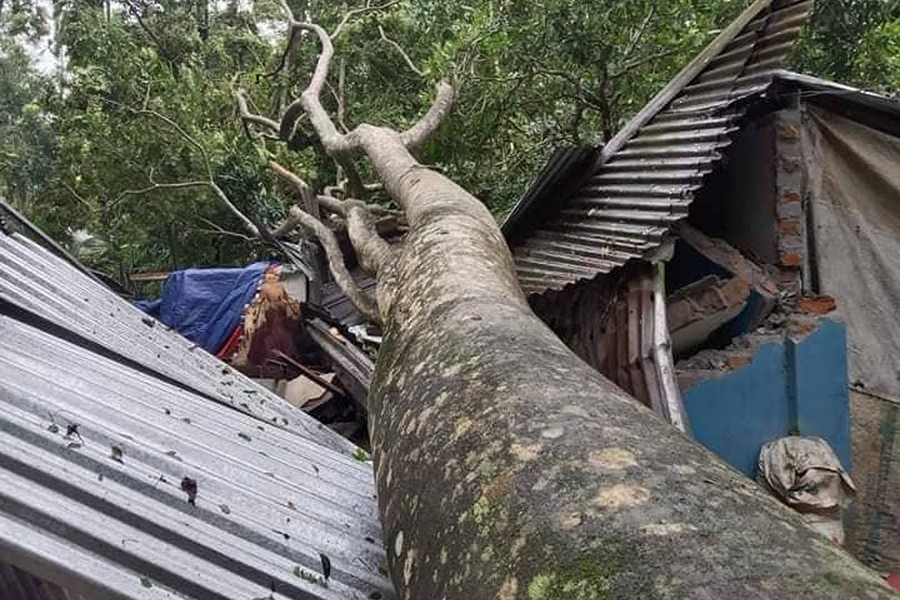Households in rural Bangladesh spend almost US$2.0 billion yearly on repairing climate-related damage and preventive measures- twice as much as the national government spends and 12 times higher than multilateral international financing for the country's rural population, says a new global report on Tuesday.
There is an urgent need for financial support to reshape and rebuild livelihoods and infrastructure.
The report "Operational-ising Finance for Loss and Damage: from Principles to Modalities" by the Stockholm Environment Institute (SEI) highlighted that in the countries like Bangladesh, vulnerable communities bear the greatest costs of climate impacts.
It shows that despite an increasing demand for financial support, finance for addressing loss and damage has largely been absent and falls far short of the scale of needs.
It focuses on several current climate finance architecture gaps, including largely inaccessible and complicated funding modalities for vulnerable communities.
Often the funds are loan-based and project-based, which increases the debt burdens for vulnerable countries and may fail to reach the most vulnerable communities in need.
Ms Ines Bakhtaoui, the lead author of the paper and Research Associate at the SEI, mentioned, "The challenge with loss and damage finance is not only to determine how much is needed but also how that money should be delivered. Inappropriate funding mechanisms might hurt the victims of climate change even more. Our report is one of the first to explore the issue."
The report makes key recommendations for prioritising negotiation of loss and damage finance at COP27.
Including simplified and directly accessible funds for communities and marginalised groups.
The report highlights the potential of unconditional cash transfers to the communities, as vulnerable communities know their needs best.
Also, representatives of the most vulnerable and discriminated communities should be engaged in all the decision-making processes.
Dr Saleemul Huq, one of the paper's authors and Director of the International Centre for Climate Change and Development (ICCCAD), stated, "The issue of how to operationalise modalities for mobilising and disbursing finance for loss and damage is extremely relevant right now. This report starts the ball rolling."
The report emphasizes adopting a climate justice lens to operationalise the loss and damage finance facility.
It stresses the need to focus on the historical responsibility of polluter nations and enacting the polluter pays principle.
The climate finance modality should ensure gender equality, and human rights, while funding is available on a grant basis.
The report showcases examples of some countries that have already taken steps to incorporate loss and damage into national plans.
Including the recently developed Mujib Climate Prosperity Plan (MCPP) in Bangladesh, identifying and quantifying potential climate-induced loss and damage.
Moreover, working with local actors has been prioritised in the report. However, it mentions the challenges in addressing local-level vulnerabilities due to the redistribution of power in disfavour of poor and vulnerable communities.
The report uses Bangladesh's Local Disaster Risk Reduction Fund as an example since this was aimed to provide adaptation funds to local communities based on risks.
However, strong political and economic elite capture was prevalent due to lack of local capacity and reliance on government for technical support.
Hence, the report highlights the importance of creating a financial structure that prioritises power dynamics at local level, reinforcing marginalisation and exclusion of communities.
Zoha Shawoo, lead author of the paper and Associate Scientist at Stockholm Environment Institute, mentioned, "Any decision on loss and damage finance at COP27 must center the needs and priorities of vulnerable communities most affected by loss and damage. This involves giving them sufficient decision-making power over how finance is used; be directly accessible, and give autonomy to affected communities to utilise it following their needs."
In recommendation, the report states that a loss and damage finance facility is time-consuming for implementation; however, it has the advantage of offering a blank slate for modalities tailored to principles grounded in climate justice. Highlighting that the COP27 decision could include a phased approach of establishing a facility in the medium term and mobilising finance through existing mechanisms in the immediate term.


